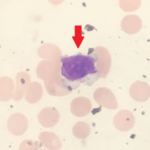 ATLANTA—The ACR released a summary of its updated guideline for the Prevention and Treatment of Glucocorticoid-Induced Osteoporosis in September. Many patients take glucocorticoids for a variety of inflammatory conditions, and anyone who is taking glucocorticoid medications and has other risk factors for osteoporosis increases their risk of developing glucocorticoid-induced osteoporosis. New osteoporosis medications and new literature have become available since the last ACR treatment guideline was published in 2017.
ATLANTA—The ACR released a summary of its updated guideline for the Prevention and Treatment of Glucocorticoid-Induced Osteoporosis in September. Many patients take glucocorticoids for a variety of inflammatory conditions, and anyone who is taking glucocorticoid medications and has other risk factors for osteoporosis increases their risk of developing glucocorticoid-induced osteoporosis. New osteoporosis medications and new literature have become available since the last ACR treatment guideline was published in 2017.
“One major side effect of glucocorticoid therapy is bone loss and an increase in the risk of fractures. Fractures can cause significant morbidity and be associated with an increased risk of mortality,” said Mary Beth Humphrey, MD, PhD, co-principal investigator of the guideline and interim vice president for research and a professor of medicine at the University of Oklahoma Health Sciences Center. “With newly approved osteoporosis medications and a review of the relevant literature, we felt it was important to update the guideline.”
The guideline team conducted an updated systematic literature review for clinical questions on non-pharmacologic and pharmacologic treatment addressed in the 2017 guideline, and for questions on new pharmacologic treatments, discontinuation of medications, sequential and combination therapy. The Grading of Recommendations Assessment, Development and Evaluation (GRADE) approach was used to rate the certainty of evidence. A voting panel including clinicians and patients achieved ≥70% consensus on the direction (for or against) and strength (strong or conditional) of recommendations.
The guideline includes recommendations on abaloparatide and romosozumab, which are two medications that are newly available since the 2017 guideline, as well as recommendations for other osteoporosis medications.
The guideline also recommends sequential therapy (any treatment regimen in which the patient is given one treatment followed by another), which was not addressed in the previous guideline. The recommendations for sequential therapies are based in part on some study designs, long-term follow-up studies, and new clinical trials.
“Some physicians may be surprised about the need for sequential therapy when completing a course of denosumab, parathyroid hormone/parathyroid hormone related protein, or romosozumab. If not done, patients could be at risk of rapidly developing vertebral fractures and bone loss,” said Linda Russell, MD, director of perioperative medicine, director of the Osteoporosis and Metabolic Bone Health Center for the Hospital for Special Surgery and co-principal investigator of the guideline.
The updated guideline also gives more flexibility on drug selection and considers patient and physician preferences.
“The previous guideline rank-ordered medication for the treatment of glucocorticoid induced osteoporosis. We felt it was important that this guideline reflect patient/physician decision making,” said Dr. Humphrey.

